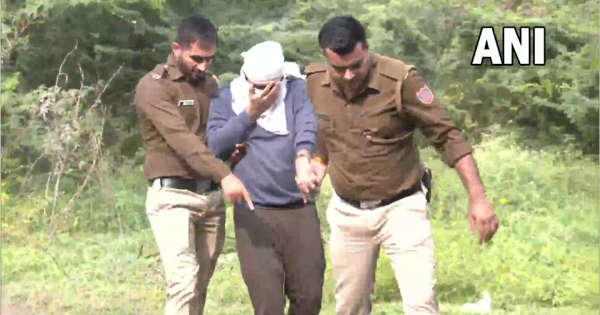The gruesome murder of Shraddha Walkar by Aaftab Poonawala has captured the mindspace of the nation. And there is a ripple effect with more stories of such gruesome killings of humans and animals especially dogs, and cows- pups and calves being reported. Love Jihad is being flouted as the reason but that would be too simplistic. Media, social media, TV channels are all talking about it.
What makes a person be so sick and cruel? Here I attempt to go into the minds of killers and the psychodynamics of this pathology. These violent incidents are not committed in a fit of rage, but are well-planned, well thought-out and then executed. Such a person fits into the technical definition of a Psychopath. The story of a Psychopath begins early, or psychopathic/sociopathic tendencies have their roots in childhood. These people have had an abusive childhood and maltreatment by the mother. As humans, we are wired to feel that bond deeply and when we feel betrayed by the mother, who is our primary bond, it is very shattering for the child. The first target of their violence and aggression are always animals, be it ants, dogs, birds, butterflies etc and they derive a pleasure out of the violence and surfeit violence. From animals, the violence and abuse progress to children, helpless, marginalized people like the disabled, sex workers, and women. This is a pattern that all people involved in child abuse and violence against women follow and all psychologists, social workers see as a red flag. For Aaftab, killing animals was a cultural practice and part of his socialization and, in a way, primed him and many others like him for butchering; domestic violence was another pattern in his life. Psychopaths often engage in criminal, cruel, or socially irresponsible behaviour, including lying, stealing, or even being violent or abusive towards others because they lack sympathy and empathy, they put their own needs whether financial or sexual ahead of the wellbeing and lives of others. Further, they are highly sensation seeking and can tolerate high levels of arousal. And are bored if something is not really redlining for them. This boredom and need for arousal often result in them taking high risks. They are masters of deception and have a network of people props to lure victims.
They are very good at faking at conforming and fitting in or blending in and are very good chameleons and that duplicity is what makes them so sinister and dangerous. Because psychopaths have no empathy for the feelings, needs, or rights of others, they also feel no remorse—even when their actions harm others. Because of these combined traits and deficits, psychopaths are much more likely to engage in crime, violence, abusive behaviour towards others, and other forms of cruel or dangerous behaviours. Psychopathic traits and characteristics often become more obvious when you have more frequent interactions with a person.
Psychopaths can be very charming, charismatic, and persuasive people. While they lack true empathy, they are often very skilled at “faking” prosocial behaviours like flattery, kindness, and false sympathy. They may use these skills to get things that they want from people, but eventually they are unable to keep up the act. Over time, the charm and charisma will probably wear off, unmasking an underlying coldness or cruelty. Cruelty and meanness are hallmark signs of a psychopath, and often lead to a pattern of violating the rights of others.
Though they commit some of the most cruel, violent, and heinous acts in society, rarely do they take responsibility for their actions. Instead, they are more likely to blame other people, make excuses, and try to justify their actions, no matter how bad they are. This is because a psychopath lacks morals, conscience, and empathy, meaning they do not have the same sense of “right and wrong” that most people do. They are sadists. Sadism is a word that describes a sick sense of pleasure from the pain and suffering of other people. In some psychopathic people, the pain of others is sexually arousing and in others, the pleasure is non-sexual and has more to do with excitement, power, or the “rush” of the experience.
A psychopath will use, abuse, and exploit other people, especially when it means getting something they want. This is bound to leave many casualties in their path, and a psychopath will have no remorse when they need to throw someone under the bus in order to get ahead.
One of the most dangerous signs of a psychopath is a tendency towards violence, aggression, and abuse. Psychopathy is one of the strongest predictors of violent behaviour, including violent crimes and sexual violence. While psychopaths can pretend to be friendly, kind, and charming for a short time, their true nature is much more aggressive. Psychopaths are more likely to hold racist, sexist, or misogynistic views towards others, and also more likely to treat people in hostile or unkind ways.
A final warning sign of a psychopath is a person who seems to be especially skilled at the art of deception. Psychopaths are masters of deception, and use lies, distortions of truth, gaslighting, and other dishonest tactics to emotionally manipulate other people and falsely represent the truth. Gaslighting is a form of persistent brainwashing that causes the victim to doubt her or himself, and ultimately lose his or her own sense of perception, identity, and self-worth. At its worst, pathological gaslighting constitutes a severe form of mind-control and psychological bullying. This is the reason why many persons in toxic and abusive relationships are unable to get out like Shraddha Walker could not.
In a nutshell, the typical 25 signs or red flags to watch out for are: Superficial Charm & Charisma and Overconfidence; Pathological Lying, Exaggerations, Manipulation & Dishonesty; Lack of Accountability & Playing the Blame Game; Need for Power, Control, & Dominance; Need for Sensation Seeking and High Arousal; Sadistic Enjoyment of Pain & Suffering; Boredom & Thrill-Seeking Behaviours, Unnecessary Cruelty, or a Mean Streak; Disregard for Rules, Laws, & Norms; Unaffected & Unafraid of Consequences; Detached, Cold & Callous Demeanour and Lack of Empathy and Cold-Heartedness; A History of Childhood Behaviour Problems; A Trail of Short, Broken Relationships; Exploitation of Others for Personal Gain; Calculated & Strategic Planning and High Intelligence; A Lack of Conscience; Abnormal Ways of Thinking; Poor Attention Span & Loss of Interest; Violent Tendencies, Abuse, or Aggression; Hostile & Oppositional by Nature; Masters of Deception; Lack of Morality and Rule Breaking; Narcissism and False Superiority Complex; Gaslighting and Psychological Bullying; Lack of Contrition and Self-Serving Victimhood; No Long Term Goals.
Prof (Dr) Chavi Bhargava Sharma (PhD Psychology) is Founder and CEO-Indic Center for Psychological Wellness and Holistic Health and Conversationists-Talking Cures.
















